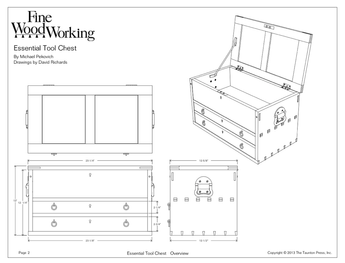I am building a table for a breakfast nook out of Curly Maple. I need advice on finishing. My plan so far is :
– alcohol based aniline dye. The table will be near a window with southern exposure and so will be exposed to direct sunlight. I had read that water based dye was less resistant to fading then alcohol based, hence this decision. Dye versus stain because I don’t want to muddy the grain but instead make it pop.
– after the dye (2 steps with 2 different dye colors), a wash coat of 1 pound shellac (amber to warm up the color a bit. I don’t want a whitish maple look but rather an “old” but not quite distressed look).
– The shellac is to seal in the dye, because the next step is to use glaze in the corners and recesses to accomplish the “old” look. I don’t want the glaze to muddy the grain so I will selectively dab glaze in the appropriate areas, not wipe it over the entire table. After the glaze another coat of thinned shellac to seal the glaze.
– next is where my uncertainty comes in. I need to decide on the clear finish material. I need the usual stuff for a table: resistance to wear, alcohol and water. Also repairability. But I want an in-the-wood finish look not an on-the-wood finish look. Not “plastic-y.” A local woodworking store suggested 100% Tung Oil. Since this is for a breakfast nook area and not a dining room, I need satin not gloss.
FWIW – I have not touched the table top with sandpaper. After the jointer/planer and gluing up, I have used cabinet scrapers and a Veritas M80 scraper. I have not used a scraping plane however, so the top is not dead flat, and that’s OK. I want to achieve a surface look that has hand-tooled marks much like we would have seen if the top were done in 18th centurt Williamsburg for example.
I would appreciate all comments on what I have planned, and especially on a recommendation for the top coat finish.
Regards,
Dan















Replies
Couple of comments and some suggestions.
First, alcohol dye is difficult to handle because it drys so fast you can not even it out. It should only be sprayed on by someone who has experience. Waterbased dyes are flooded on and then wiped with a rag to even them out. You can apply more or even use just a plain cloth to lighten areas. They are a lot easier to apply and control. There is no difference between a waterbased dye and an alcohol dye as far as resistance to UV. After all, once the water or alcohol evaporate, you are left with the same thing. It's true that some dyes are less light sensitive than others but that has more to do with color than the solvent.
Next, you talk about using shellac to add some coloring. That's fine, but your dye should be what is primarily providing the color. But, no real problem with using shellac as a seal and barrier coat between the dye coat and the glaze coat.
As to the final finish. Don't listen to whoever suggested tung oil. Forget the fact that pure, 100% tung oil is a lousy finish, no oil will work well for you. Oils must be applied to virgin wood surfaces so they can be absorbed into the wood. Once you have applied shellac, glaze and shellac again, you will have completely sealed the pores and no oil can be absorbed. Also, tung oil provides no water, water vapor or abrasion protection and has no long term durability.
You should be looking at film finishes like oil based varnish for something like an everyday table. I would recommend using Waterlox Original Gloss or Satin or Behlens Rock Hard. Both are phenolic resin varnishes that provide protection that rivals polyurethane varnishes. If you want something more repairable consider a lacquer finish if you have spray equipment. While lacquer can be brushed if properly retarded, spraying is the best way to go.
Howie,
Thx for your input. I've already aplied the alcohol based dye. I used Solar-Lux and added 10% drying retarder to help with the issue you raised. It worked well.
Your comment about the tung oil reinforced what I already believe. Since the shellac has sealed the wood, the tung oil will never contact the wood. It would have to cure on the surface of the shellac.
I like the Behlen product line, and considered the Rock Hard. Can you pls comment on how the finish will look with regard to appearing to be a plastic poly type film (not from a chemist standpoint, but rather from a purely visual perspective)? My biggest concern is not having a thick plastic film appearance. Certainly, I can try Rock Hard, Waterlox and other products on scrap wood, but I'd rather not go out and buy a number of products to try. If those 2 are really your top two recommendations based on what I am trying to achieve, then certainly I'll try those two on scrap wood.
A related question - what do you think about a different top finish for the top versus the table base? With the base, no concern about wear, alcohol, etc. But the finish would be applied to a vertical surface (and the legs are turned with a lot of crevices), so I am concerned about drips and runs. I do not have spray equipment.
Again, thx for your opinions.
Regards,
Dan
>> It would have to cure on the surface of the shellac.That will never happen. Tung takes forever to cure and it doesn't form a film when it cures. If it's on a non-porous surface is ends up just crinkling into a gummy glob.The so called "plasticy" looks comes more from a thick finish than from the type of resin. Either the Waterlox or the Behlen will look just fine if you apply no more than three coats. Even if you use a satin finish, you might want to rub out the finish after it has fully cured in about 3-4 weeks. Sure, it's not sin to finish the "money" surfaces to a higher degree than the other parts. It's done all the time. I generally use a gloss finish for "money" surfaces then rub them out to a satin after they cure. But on legs and support structure I will use a satin finish and not rub it out.Howie.........
Howie,
I'm sure you read the article in the July/August 2005 issue of FWW. It was Chris Minick's test of various wipe-on finishes. I was amazed that the best performer was Minwax Wipe-on Poly. Taking your comment that it is the thickness rather than the finish chemistry that causes the "plasticy" look I should try the Minway on scrap as well.
The issue of finishing the "money" surface differently then the other surfaces is exactly what I had in mind. You said it better than I. I had a different twist to my question on this though. I was wondering if a different finish chemistry for the table base would make my job eassier. Something that wouldn't run during the application for example.
Thx for taking the time to comment. I appreciate your more extensive knowledge.
Dan
I tried Minwax Wipe-On Poly based on Chris Minick's article. I find that it works well and is about as foolproof as you can get. (And I am very much the fool when it comes to finishing.) With about three coats you get a nice sheen and a protective finish that doesn't look plastic at all. At around five or six coats, you do start to build up enough of a surface film that it begins to look like it's on the surface rather than in the surface.
-Steve
Yes, if you keep the poly thin enough it doesn't look horrible. But you can get a bit thicker with the traditional resin finishes before they begin to look "plasticky". This is because they are generally clearer than the poly. It's the haze that causes them to look bad. Three or four wiped on coats of the Minwax poly won't look "plasticky" but won't protect against spills nearly as well as two brushed on coats of Rockhard. (It takes about 3 coats of a wipe on to be equivalent to 1 coat of brushed on varnish.)
systembuilder,
It sounds like your building a superb table. I've used all three finishes as wipe-ons (Waterlox, Minwax, Rock hard) and if there is a visible difference I can't see it. The bigger issue for me is how much will be left in the can and run the risk of going bad before it gets used.
My experience has been consistent with the advice of Howard and Steve except in one area. In my shop/home I have found I need to wait two months for the varnish to fully cure and get the results from the wax I'm looking for. Last night I applied Watco Satin Wax to a Waterlox finished piece that is about 10 weeks old...the wood was tooled only (no sandpaper) and buffed it hard with a wool bonnet...wow. I have a second piece that is about three weeks old that was prepared Phil Lowe style (plane, scrape, sand up to 220) and finished in Minwax. I've got to wait another month for that piece. My experience has been that if I apply wax now it'll just dull it up...and then in about a month the glow comes through kinda on it own...but it always takes two months to get the finish I want. good luck
BG,
Thx for the comments. I think I'll try Minwax poly, rock hard and waterlox on scraps and see how they each look after about 3 coats. Can I wipe on the rock hard or is a brush necessary and/or superior?
I did not plan on waxing and buffing the surface, since I don't want a sheen on the piece anyway. But by skipping the wax am I forgoing a protective surface for the top? This table will get daily use. I guess the wax would help with water repellency. I'm building this table for friends and don't want to wait weeks to give it to them while I wait for the film to harden so that I can wax it. I can wax it in 2 months in their home of course, but by them it will have a thin layer of jelly, peanut butter, etc. as they have 3 little ones. It will have a nice "young children patina."
Dan
systmbuilder,
I think it was Howard who provided a nice formula for making the Rock Hard a wiping varnish (1/3 varnish, 1/3 BLO, 1/3 mineral spirits)so it's quite like the Minwax and Waterlox in it consistency.
The wax finish does nothing to protect the wood that the varnish hasn't already done..so it really isn't necessary I believe. I was pushing the wax because it gives it that 'old time, been waxed by the servants for 100 years' look. I think you will have to wait a month before the peanut butter is safe on the varnish however...
>> I'm sure you read the article in the July/August 2005 issue of FWW.That article was IMO, and the opinion of many experienced finishers, highly flawed. The tester did not apply the finishes in accordance with the manufacturer's instructions. It was not a well constructed test and the results were, therefore, flawed and unreliable. There was much discussion here and on other woodworking boards about it at the time.That said, unless you are experienced and proficient at brushing, using a thinned wiping varnish is easier. No need to buy anything special. You can make your own wiping varnish by thinning your favorite varnish 50/50 with mineral spirits. You will end up with a better product.Applying a wiping finish also takes some knowledge. Here is something that works very well: A friend of mine put it together years ago and it has worked well for many.QUOTEThere are a number of suggested application regimens that are totally subjective. The number of coats in a given day, the % of cut on various coats, which coat to sand after, when to use the blade and a whole host of other practices are all minor differences between finishers. There are some things that I consider sacred when applying a wipe-on finish.First, you can use any full strength oil based clear finish. Polyurethane varnish or non-poly varnish is fine.If you are making your own wipe-on the mix is scientific - thin. I suggest 50/50 with mineral spirits because it is easier to type than any other ratio and easy to remember. Some finish formulators have jumped on the bandwagon and you can now get "wipe on" finish pre-mixed. If you use a pre-mixed, thinning is generally not neccessary. But making your own is cheaper and you know what's in it.The number of coats in a given day is not important. Important is to apply a wet coat with an applicator and merely get it on. Think of a 16 year old kid working as a busboy at Denny's you have sent over to wipe off a table. Sort of swirl the the material on like you would if you were applying a paste wax. Don't attempt straight strokes. The applicator should be wet but not soaked. The applicator can be a paper towel, half a T-shirt sleeve or that one sock left after a load of washing. Then leave it alone. The surface should not be glossy or wet looking. If you have missed a spot, ignore it - you will get it on the next coat. If you try and fix a missed spot you will leave a mark in the finish.Timing for a second coat involves the pinkie test. Touch the surface with your pinkie. If nothing comes off you are ready for another coat. If was tacky 5 minutes ago but not now, apply your next coat just as you applied the previous coat. Remember, you are wet wiping not flooding. After applying the second coat, let it fully dry for 48 hours. Using 320 paper and a sanding block ligthtly sand the surface flat. Now, begin applying more coats. Do not sand between coats unless you have allowed more than 24 hours to elapse since the prior coat. The number of coats is not critical - there is no critical or right number to apply. For those who need a rule, four more coats on non-critical surfaces or six more coats on surfaces that will get abraded seems to work.After your last coat has dried at least over night you will have boogers in the surface. You should not have marks in the surface because you ignored application flaws. You may have dust, lint and, if you live in Texas, bug legs. Use a utility knife blade at this point. Hold it between your thumb and forefinger, near the vertical, and gently scrape the surface. Gentle is the important word - no harder than you would scrape your face. If you start scraping aggressively you will leave small cut marks in the surface. After you have scraped to the baby butt stage gently abrade the surface with 320 dry paper or a gray ScotchBrite. Clean off the surface. Now, leave the area for two hours and change your clothes. Apply your last coat with a bit more care than the previous coats and walk away.An anal person is going to have a tough time with this process. Missed spots have to be ignored. Wet wipe, don't flood. Scraping to babies butt smooth means scraping no harder than scraping a babies butt. Ignoring any of these will leave marks that are tough to get out. Getting these marks out requires some aggressive sanding to flatten out the surface and starting over.Jim KullEND QUOTEFinally, It works better to use a gloss varnish for all coats except the last. The fatteners in semi-gloss and satin tend to rapidly fall out of suspension when the finish is highly thinned. If you want a non-gloss finish, use it only on the final coat or two and be sure to stir the material frequently or you will end up with cloudy streaks.Another point, Waterlox Original comes in three formulations. One is the Sealer/Finish, one is the Gloss and the last is Satin. The Sealer/Finish is already thinned and produces a soft, satin finish. The Gloss and Satin require thinning if you want to use them as a finish.Howie.........
just a thought - consider sanding after the dye to enhance contrast in the figured maple.
Stan,
Interesting, I've never heard of that technique. My feeling is that any project which uses figured wood screams for the grain to pop out of the surface. Is that an accepted "best practice" among seasoned professionals? I would definitely try that if so (I'll try it anyway on a side-by-side test with cutoffs to see if I can discern a difference).
I love to hear from more experienced people than myself.
Thx,
Dan
This forum post is now archived. Commenting has been disabled